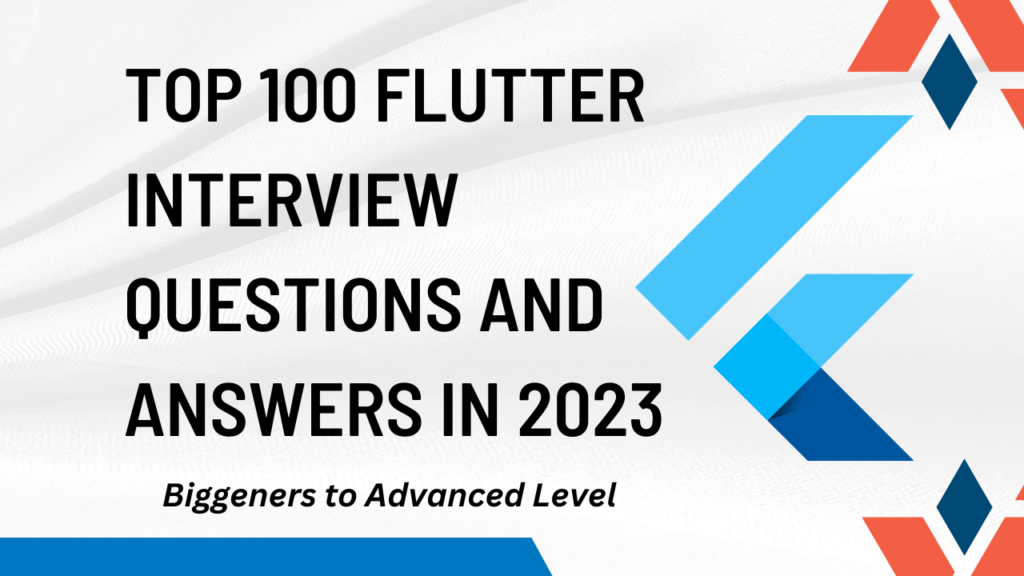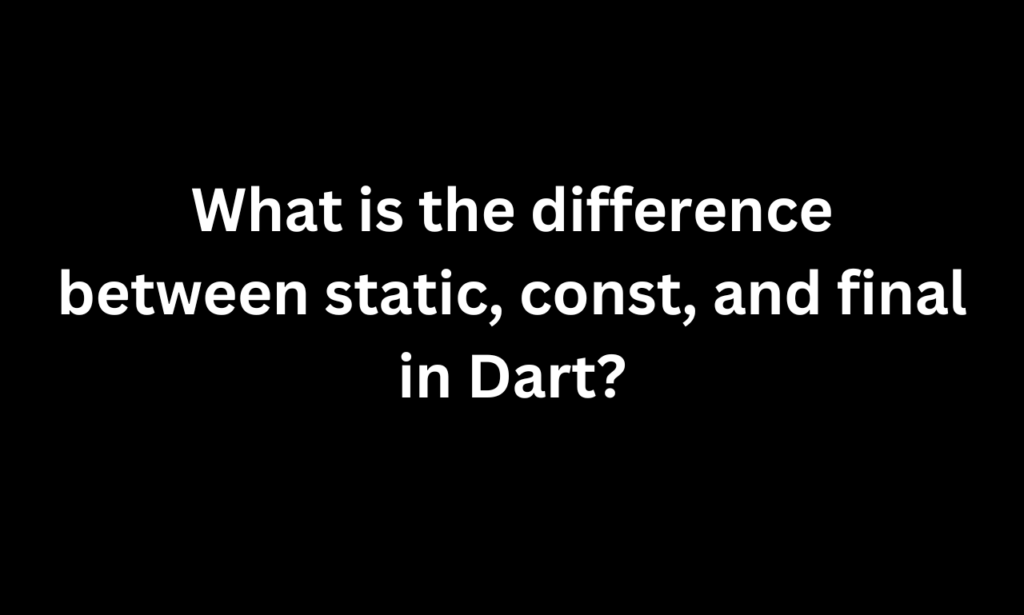Flutter, a modern framework developed by Google, has gained immense popularity in the mobile development world. Its lifecycle methods are integral for creating responsive and well-functioning applications. This article delves into Flutter’s lifecycle methods, explaining their purposes, how they work, and providing code examples for a clearer understanding.
Introduction to Lifecycle in Flutter
In Flutter, lifecycles are crucial for managing the state of widgets and their underlying elements. These methods allow developers to hook into the framework’s state management process, controlling how and when widgets are built, rendered, and disposed of.
The Widget Lifecycle
Flutter’s widget lifecycle revolves around three key stages:
- Creation: When a widget is instantiated.
- Updating: When the widget’s state changes.
- Destruction: When the widget is removed from the widget tree.
Code Example for Widget Lifecycle
class MyWidget extends StatefulWidget {
@override
_MyWidgetState createState() => _MyWidgetState();
}
class _MyWidgetState extends State<MyWidget> {
@override
void initState() {
super.initState();
// Called once when the widget is created
}
@override
void didChangeDependencies() {
super.didChangeDependencies();
// Called when a dependency of the State object changes
}
@override
void didUpdateWidget(MyWidget oldWidget) {
super.didUpdateWidget(oldWidget);
// Called whenever the widget configuration changes
}
@override
void dispose() {
// Called when the widget is removed from the widget tree
super.dispose();
}
@override
Widget build(BuildContext context) {
// Build and return our widget's UI
return Container();
}
}The App Lifecycle
Apart from widget lifecycles, Flutter also provides hooks for the overall app lifecycle. These are particularly useful for managing resources when the app is in background or foreground.
App Lifecycle States
- inactive: The app is in an inactive state and is not receiving user input.
- paused: The app is not currently visible to the user.
- resumed: The app is visible and responsive to user input.
- detached: The app’s UI is not yet (or no longer) displayed.
Code Example for App Lifecycle
To handle these states, WidgetsBindingObserver is used:
class MyApp extends StatefulWidget {
@override
_MyAppState createState() => _MyAppState();
}
class _MyAppState extends State<MyApp> with WidgetsBindingObserver {
@override
void initState() {
super.initState();
WidgetsBinding.instance.addObserver(this);
}
@override
void dispose() {
WidgetsBinding.instance.removeObserver(this);
super.dispose();
}
@override
void didChangeAppLifecycleState(AppLifecycleState state) {
super.didChangeAppLifecycleState(state);
if (state == AppLifecycleState.paused) {
// App is in background
} else if (state == AppLifecycleState.resumed) {
// App is in foreground
}
}
@override
Widget build(BuildContext context) {
return MaterialApp(
home: Scaffold(
body: Center(child: Text('Hello, Flutter!')),
),
);
}
}Also Read:- Difference Between Stateless and Stateful Widget in Flutter
When are Flutter Lifecycle Methods Called?
Widget Lifecycle
initState():
- When Called: Immediately after the widget is inserted into the widget tree.
- Benefit: Ideal for initializations and one-time setup operations. It’s the first method called after the widget is created, making it perfect for initial state setup or subscribing to streams or any objects that require disposal.
2. didChangeDependencies():
- When Called: When a dependency of the
Stateobject changes, such as anInheritedWidgetit’s subscribed to. - Benefit: Useful for widgets that interact with models or inherited widgets. It’s a place to re-run initialization logic that depends on context or objects obtained via
InheritedWidgets.
3. build():
- When Called: Whenever it’s necessary to rebuild the UI. This can be due to internal state changes or external factors like parent widget rebuilding.
- Benefit: It’s where you describe your UI. The framework calls this method in response to changes in the state to reflect the updated values on the screen.
4. didUpdateWidget():
- When Called: Whenever the widget configuration changes.
- Benefit: It allows reacting to changes in the widget’s properties. It’s used for any logic that needs to happen when the parent widget rebuilds and sends new properties to its children.
5. dispose():
- When Called: When the widget is permanently removed from the widget tree.
- Benefit: Essential for resource management. It’s where you unsubscribe from streams, controllers, or any object that could lead to memory leaks.
App Lifecycle
didChangeAppLifecycleState():- When Called: Triggered by the system when the app lifecycle state changes (e.g., paused, resumed).
- Benefit: Allows the app to respond to lifecycle changes, like pausing/resuming timers, fetching/updating data, or managing resource-intensive tasks based on whether the app is in the foreground or background.
General Benefits of Understanding Flutter Lifecycle Methods
- Performance Optimization: By managing the state and lifecycle events properly, you can optimize the app’s performance, reducing unnecessary rebuilds and memory usage.
- State Management: They provide a structured way to manage state changes, leading to more predictable and reliable behavior of the application.
- Resource Management: Proper use of lifecycle methods ensures efficient allocation and release of resources, preventing memory leaks and ensuring the app runs smoothly.
- User Experience: By responding appropriately to lifecycle events, you can enhance the user experience, such as saving the app’s state when it goes into the background and restoring it when it comes back to the foreground.
Best Practices and Use Cases
Understanding and correctly implementing lifecycle methods in Flutter is crucial for:
- Resource Management: Properly managing resources, like network connections or sensors, when the app or widget is not in use.
- Data Fetching: Fetching or updating data when a widget or app state changes.
- State Preservation: Saving and restoring state when navigating between screens or app states.
- UI Updates: Optimizing UI rendering and updates.
Also Read:-
Scaffold class in Flutter with Examples
What is the difference between static, const, and final in Dart?







